 Samsung SH100: Pocket Camera with Instant Image Sharing
Text and Images by Allison Gibson
Samsung SH100: Pocket Camera with Instant Image Sharing
Text and Images by Allison Gibson
First revealed at CES this year, the Samsung SH100 ($199.99 MSRP) compact digital camera offers instant, wireless sharing of images---via email or upload to social networking and photo sharing sites---directly from the device. For a petite pocket camera, this gadget has a far reach. It features a 14-megapixel CCD image sensor, a 5x optical zoom 26mm f/3.3-5.9 Samsung lens, and 720p High Definition video recording (30fps).
Instant Sharing
The most notable feature of the Samsung SH100 is its ability to share and automatically backup captured images instantly and wirelessly, with easy menu options for single or bulk image sharing. By using the camera's built-in wireless, you can connect to your WiFi network, to other Samsung WiFi cameras, or to an Android-powered Galaxy S smartphone to share your images. The phone can also be used as a remote viewfinder, offering real time preview and control of the shutter release.
The options for sharing include: email, and upload to Facebook, Picasa, YouTube and Photobucket. You can also browse existing photo albums while logged into Facebook, but cannot view walls or post statuses (there's no qwerty keyboard on the camera).
When I recently met with members of the Samsung team, I nagged them about the fact that the SH100 wasn't Twitter compatible, given the massive global popularity of the social networking site. Twitter users regularly include images in their tweets and I saw this as a missed opportunity for Samsung. Another obvious missed opportunity for the photo sharing community is Flickr. The good news is, I was told that Twitter and others are being considered for the next generation of the camera, and that adding support for new services is easy now that the technology for sharing is already there there. The fact that the remote viewfinder feature only works with Samsung smartphones seems a little incestuous and excludes users of other smartphones, but I can understand the interest in keeping the technology within the brand.
Design & UI
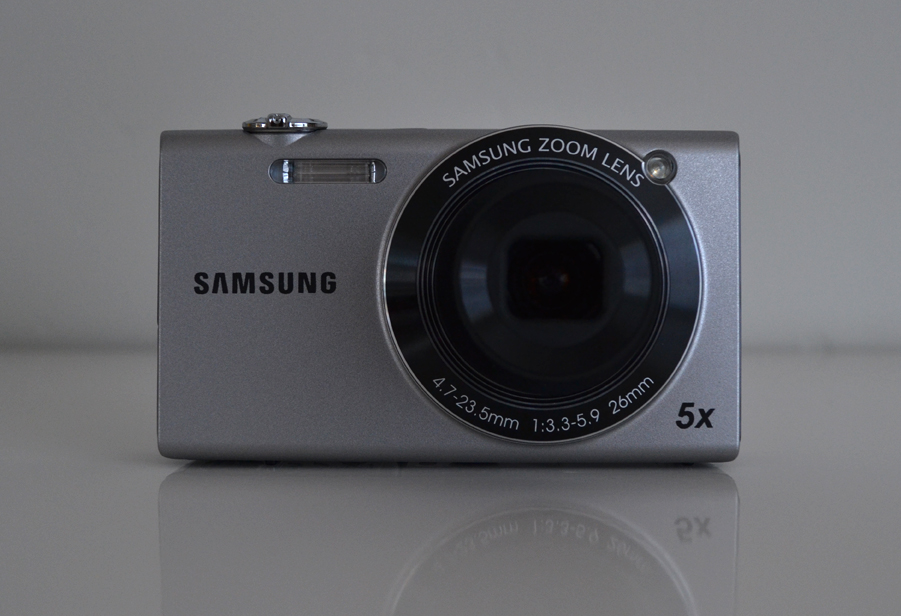

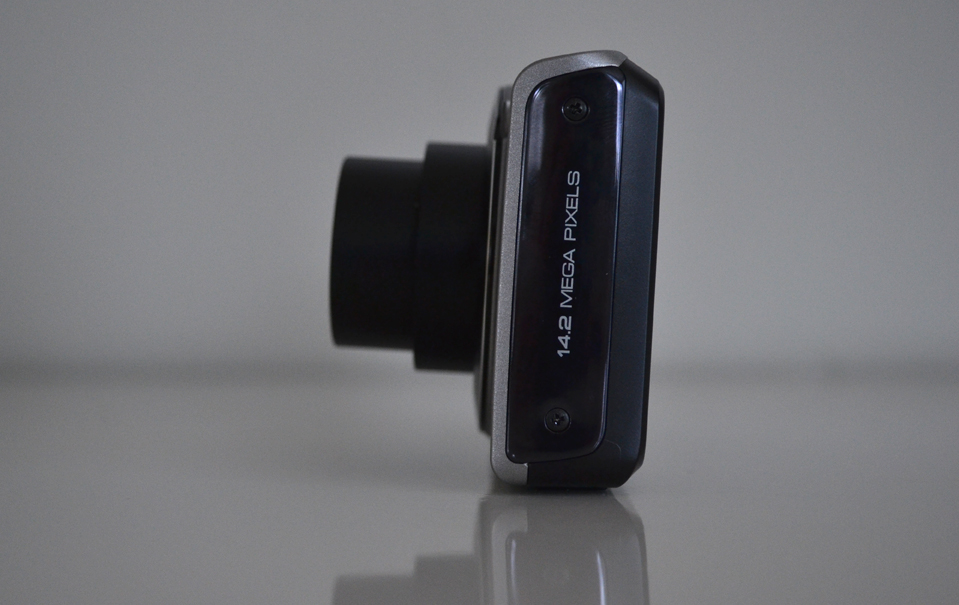
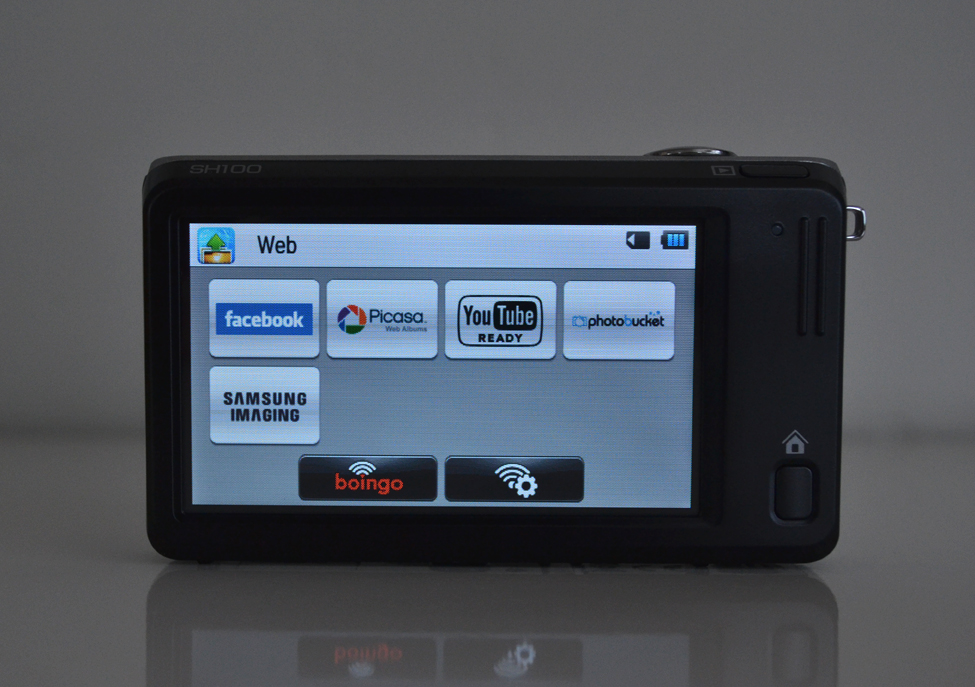
click thumbnails to enlarge
With a 3-inch touchscreen LCD that operates in the familiar way of a smartphone, the menus are easy to navigate, if a smidge less graceful in the dragging department than the smartphone that I'm most familiar with---the iPhone 4. The only button on the back of the camera, to the right of the LCD, is a dedicated Home button, which brings you back to the main menu from wherever you happen to be. At the top of the camera, you have the power button, zoom toggle and playback button. Otherwise, everything else is in the digital menu, which certainly helped to keep the camera's slim profile in check. At 3.66"W x 2.12"H x .74"D, the SH100 is very compact, and also lightweight. Another way they keep the size of the body down is to use MicroSD for memory, rather than the more common SD/SDHC cards.
The thing about these tiny digicams, though, is that they are sometimes too small to stabilize, making them prone to blur from camera shake. And, unfortunately, the SH100 only features "Digital Image Stabilization," not OIS (optical image stabilization, which stabilizes before the image is converted digitally) to compensate for shakiness. However, one exterior aid is the thumb grip on the back of the camera, which allows the camera to sit more securely in-hand when recording. But even then, especially in low-light conditions, you will need to brace the left side of the camera and turn up the ISO sensitivity to combat blur. I think one way to combat this---externally--- in a future generation would be to raise the shutter release, rather than leave it in the recessed position it is in now. As it is now, it requires a lot of pressure to snap a shot, and any extra pressure is bound to cause camera shake.
Creative Touches
 Magic Frame: Billboard 1 (click to view full-size image)
Magic Frame: Billboard 1 (click to view full-size image)
One of the many creative features of the SH100 is called Magic Frame Shot, which allows you to layer your photograph into a digital template of your liking, with real time preview of the effects as you shoot. The options include: Wall Art, Album, Ripple, Full Moon, Old Record, Magazine, Sunny Day, Classic TV, Yesterday, Holiday, and two Billboard choices. Options such as image quality, flash and self-timer may still be applied to this effect. As with a regular shot, a Magic Frame Shot can be instantly shared on Facebook or emailed once captured.
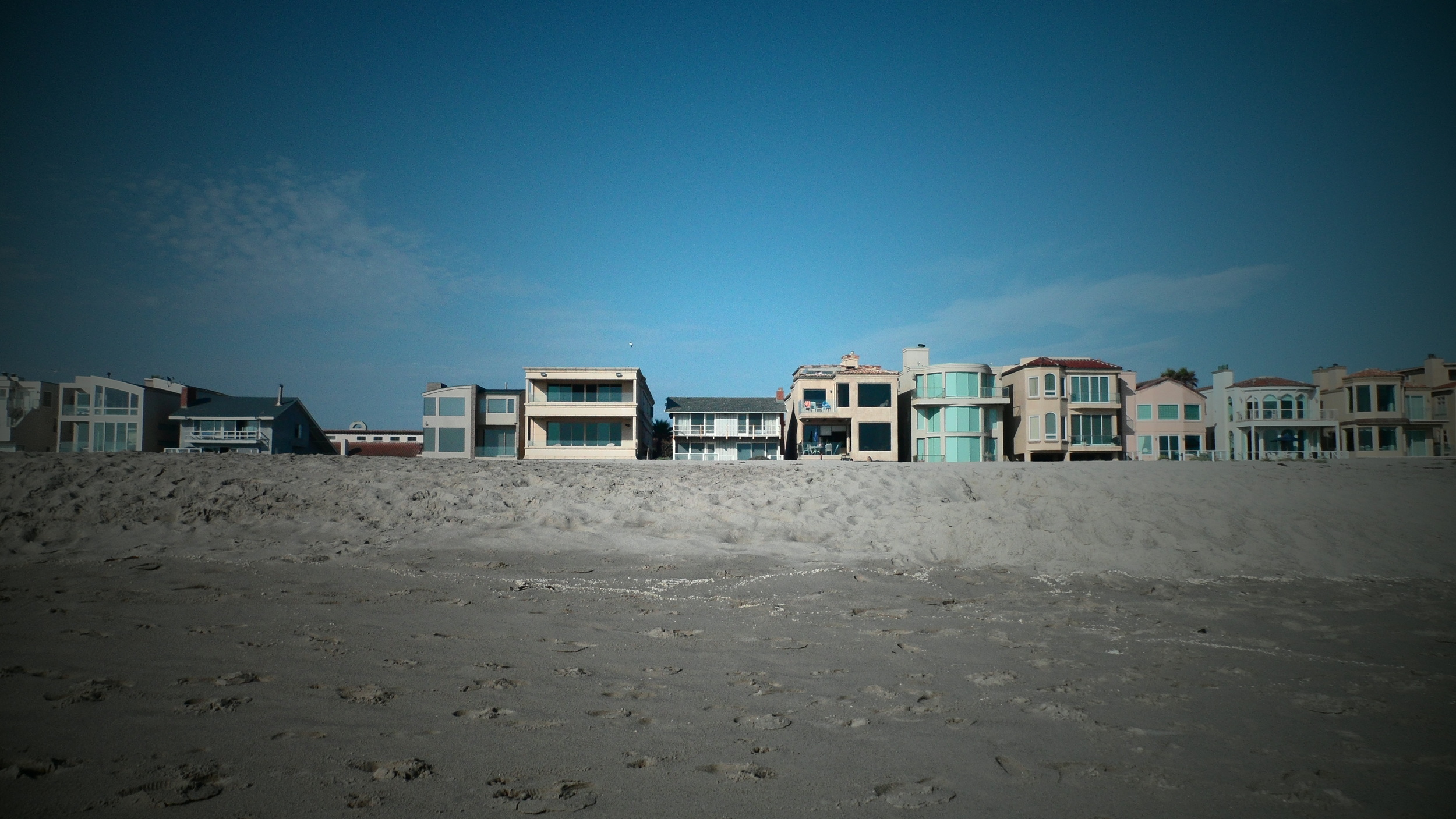
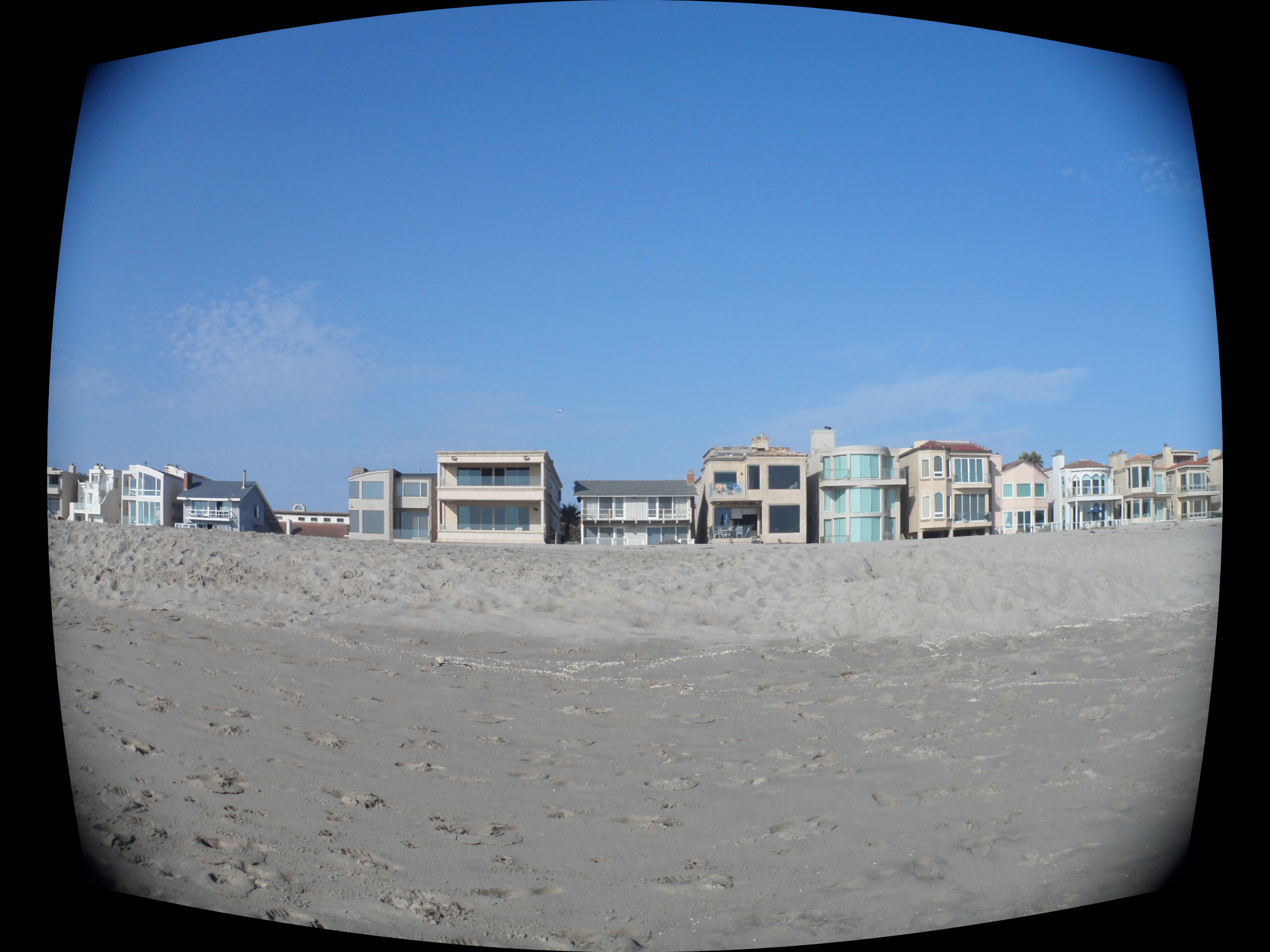

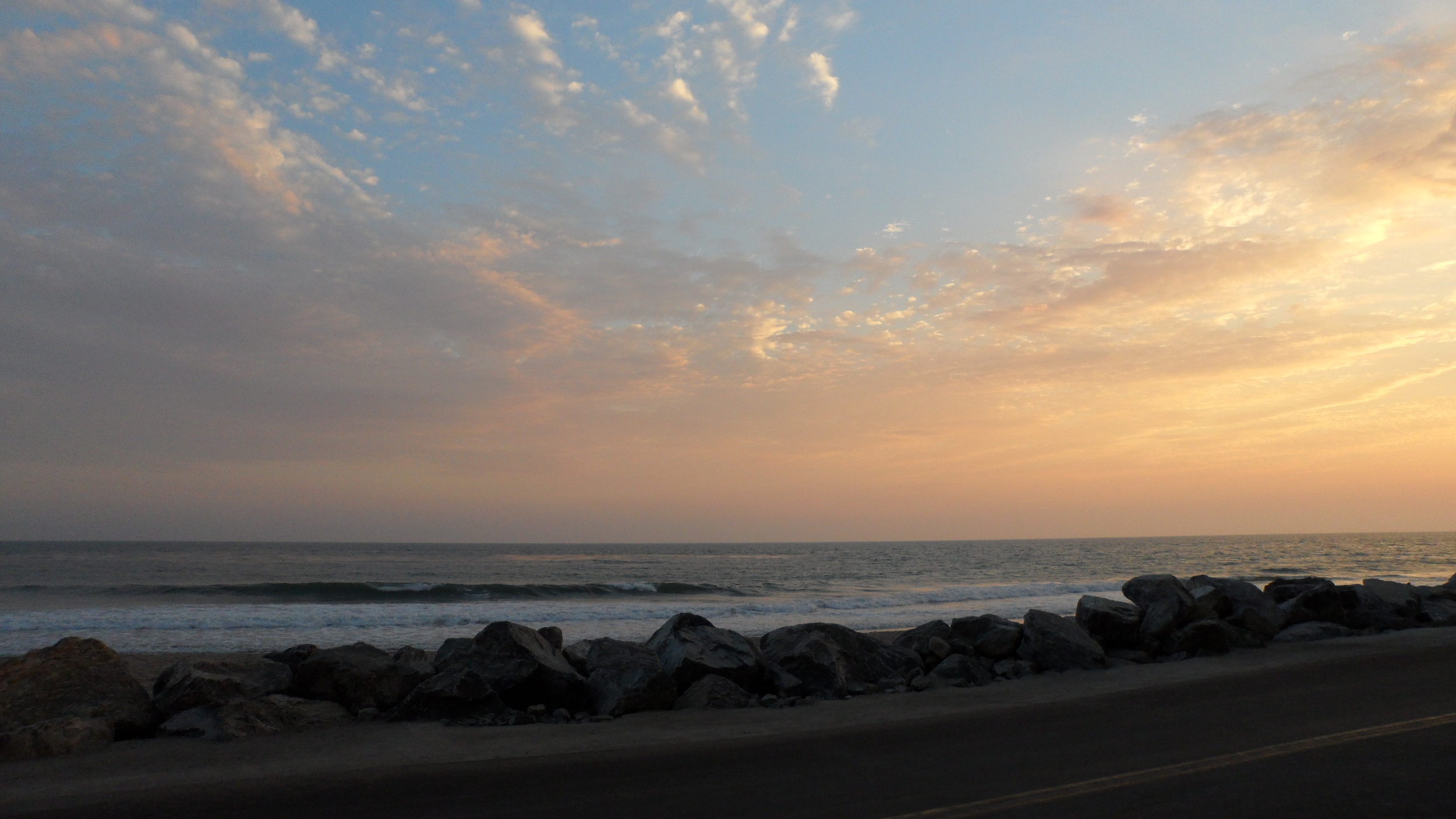 Photo Filters: Vignetting, Fish-eye, Miniature; Smart Auto mode (click images to enlarge)
Photo Filters: Vignetting, Fish-eye, Miniature; Smart Auto mode (click images to enlarge)
Another built-in creative feature of the SH100 is Photo Filter, which includes a menu of distinct automatic art filters, such as: Miniature (similar to Tilt-Shift or Toy Camera options seen elsewhere), Vignetting (similar to a Pinhole camera effect), Soft Focus, Half Tone, Sketch, Fish-eye, Defog, Classic, Retro, Negative, and two Old Film options. I was pleased to find that the Fish-eye filter is one of the better digital replications of the fish-eye lens effect that I've seen to date, after having tested the effect in several other cameras' art filter lineups---including that of the PENTAX K-x and K-r DSLRs. I only wish the fish-eye images weren't framed with that black vignette, which sort of looks like an old television set.
Additional creative features include: Scene Modes, Vignetting, Beauty Shot, Movie Filter, Night Shot, Palette Effect and Object Highlight. There is also a built-in Photo Editor. The SH100's Smart Auto 2.0 for still images and video does the guesswork for you by choosing one of 17 different shooting modes.
Conclusion
While the Samsung SH100 isn't the first WiFi point-and-shoot, it does offer the most avenues for connecting. Hopefully soon this will be standard fair for pocket cams, with even more options, as instant sharing is the name of the game these days.
Samsung SH100
- MSRP:
- $199.99
- Size/Weight:
- 3.66”W x 2.12”H x 0.74”D
- Image Sensor:
- 14-megapixels, CCD (1/2.33″)
- Still Recording Format:
- JPG
- Memory:
- Micro SD
- Display:
- 3-inch touch LCD
- Video Recording Mode:
- 1280x720 (30/15fps); in H.264 format
- ISO Equivalent:
- Auto, 80, 100, 200, 400, 800, 1600, 3200
- Power Source:
- Rechargeable Battery
- Contact:
- www.samsung.com/us
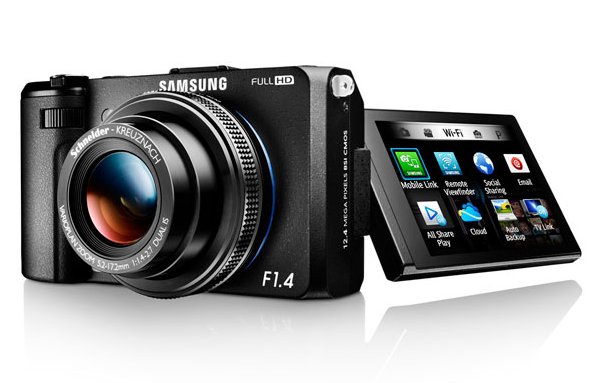 Samsung announced today that their new EX2F Wi-Fi enabled Smart camera is now available nationwide for $499.99 ($50 less than the anticipated retail price when the camera was announced in early September). The compact EX2F offers full manual control, an f/1.4 24mm wide-angle lens, a 1/1.7-inch 12-megapixel BSI CMOS image sensor, and a 3-inch Swivel AMOLED display. With Wi-Fi connectivity, photographers can instantly share their shots via email or social networking directly from the camera. Users can also use the Remote Viewfinder app to frame shots on a smartphone or tablet’s screen.
Samsung announced today that their new EX2F Wi-Fi enabled Smart camera is now available nationwide for $499.99 ($50 less than the anticipated retail price when the camera was announced in early September). The compact EX2F offers full manual control, an f/1.4 24mm wide-angle lens, a 1/1.7-inch 12-megapixel BSI CMOS image sensor, and a 3-inch Swivel AMOLED display. With Wi-Fi connectivity, photographers can instantly share their shots via email or social networking directly from the camera. Users can also use the Remote Viewfinder app to frame shots on a smartphone or tablet’s screen.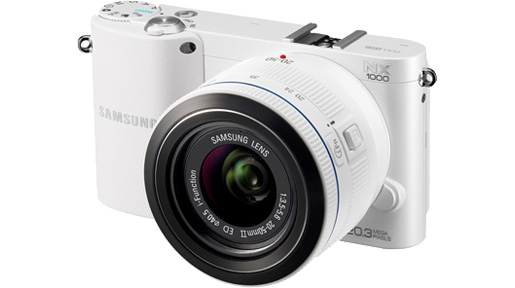
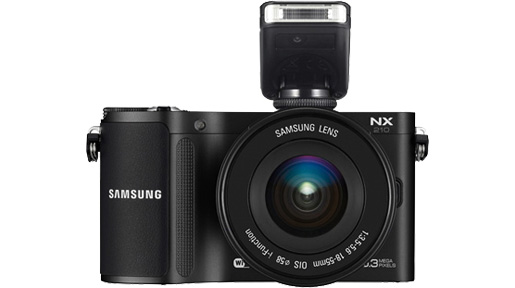
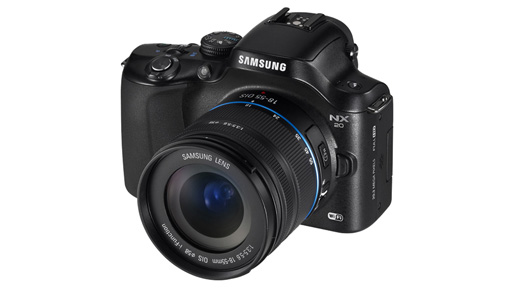













 by Don Sutherland
by Don Sutherland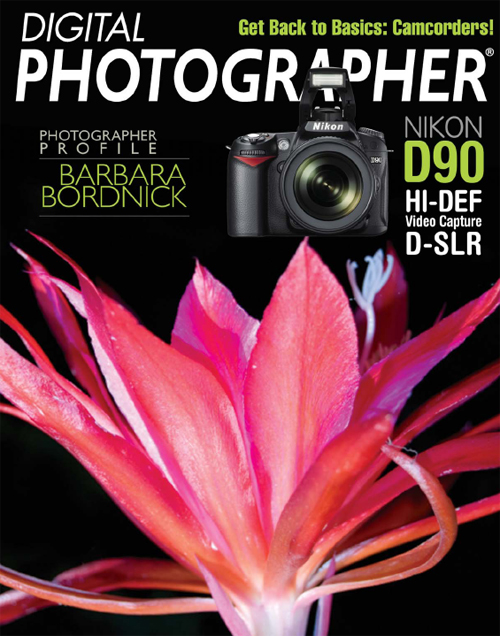

 After a whirlwind opening day at CES, I have reports on brand new products from Sony, DXG, Digital Foci, HP, iomega and an up close look at a revolutionary Panasonic camera. My favorite product of the day was Sony's just announced
After a whirlwind opening day at CES, I have reports on brand new products from Sony, DXG, Digital Foci, HP, iomega and an up close look at a revolutionary Panasonic camera. My favorite product of the day was Sony's just announced 



